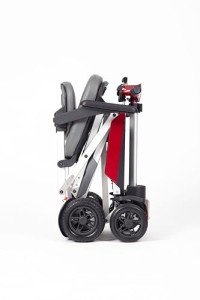The Complete List Of Mobility Devices Dos And Don'ts
Understanding Mobility Devices: Enhancing Independence and Quality of Life
In today's busy world, the desire for mobility is universal. However, particular medical conditions or age-related obstacles can prevent movement, causing a continuous search for help. Mobility devices work as vital tools to improve self-reliance, enhance lifestyle, and make it possible for individuals to engage fully in their communities. This article supplies an extensive introduction of mobility devices, including their types, features, choice requirements, and more.
Kinds Of Mobility Devices
Mobility devices vary from simple aids to complicated equipment, tailored to meet different requirements. Below is a table summarizing typical types of mobility devices:
Type of Device
Description
Ideal For
Walkers
Four-legged assistance devices that offer exceptional stability while strolling.
People needing extra assistance.
Walking canes
Single or three-legged sticks that enhance balance and assistance walking.
Those with slight mobility troubles.
Wheelchairs
Seats mounted on wheels, offered in manual and electric versions.
People with limited or no mobility.
Scooters
Electric cars created for outdoor usage and ease of navigation.
Those who can't stroll fars away.
Crutches
Devices that help people transfer weight far from a hurt leg.
Individuals recovering from leg injuries.
Rollators
Walkers with wheels, seats, and brakes for enhanced mobility.
Users needing rest alternatives while strolling.
Raise Chairs
Reclining chairs that assist users in standing up and sitting down.
Seniors or those with mobility restrictions.
Mobility Scooters
Small electric cars for minimal mobility, frequently utilized outdoors.
Individuals requiring assistance over cross countries.
Key Features of Mobility Devices
When picking a mobility device, numerous key functions must be considered to ensure optimum functionality and ease of use:
- Weight Capacity: Understanding the gadget's weight restriction is important for safety and efficiency.
- Adjustability: Devices ought to be adjustable in height and width to fit the user comfortably.
- Mobility: Lightweight and foldable alternatives are essential for users who travel or need transportation.
- Stability and Safety: Look for features like anti-tip wheels and tough structures to enhance security.
- Relieve of Use: Simple systems and easy to use styles can make a considerable distinction in day-to-day use.
- Comfort: Ergonomic styles and padded seats can enhance the user experience.
Picking the Right Mobility Device
Selecting the ideal mobility gadget can be a challenging task. Here are some steps to guide the decision-making procedure:
- Assess Needs: Evaluate the individual's mobility obstacles and day-to-day activities.
- Seek advice from a Professional: Engage healthcare specialists who can offer recommendations based upon the individual's physical condition.
- Trial Options: If possible, trial various devices to determine comfort and performance.
- Evaluation Budget: Consider the expense of the device, consisting of any additional functions or modifications needed.
- Research study Options: Determine the very best brands and designs by reading reviews and contrasts.
Table: Comparative Analysis of Popular Mobility Devices
Gadget
Benefits
Drawbacks
Walkers
Outstanding stability, promotes strolling.
Large, might limit motion in small areas.
Walking sticks
Lightweight, improves balance.
Might not supply sufficient support for serious mobility issues.
Wheelchairs
Perfect for those with substantial mobility limitations.
Can be troublesome, particularly in indoor environments.
Scooters
Great for outside use, simple to maneuver.
Minimal indoor usability, much heavier.
Rollators
Offers rest choice, easy to move.
May need more space than conventional walkers.
Lift Chairs
Comfy, helps shift from sitting to standing.
More costly, bigger footprint.
Frequently Asked Questions (FAQs)
1. What is a mobility device?
A mobility device is any tool developed to assist individuals in moving and browsing their environment. This consists of walkers, wheelchairs, scooters, and crutches.
2. How do I understand which mobility device is best for me?
Consider your particular mobility challenges, physical capabilities, and lifestyle needs. Consulting with healthcare professionals can likewise provide tailored recommendations.
3. Are mobility devices covered by insurance?
Lots of insurance coverage plans, consisting of Medicare, may cover particular mobility devices. It's crucial to contact your insurance coverage company for specific protection information.
4. Can I lease a mobility device instead of buying one?
Yes, lots of medical supply stores and drug stores offer leasings for mobility devices. This choice is advantageous for people with short-term mobility problems.
5. How can I maintain my mobility device?
Regular upkeep is vital. Learn Additional consists of cleaning up the device, looking for wear and tear, and guaranteeing all parts are functioning properly.
The Impact of Mobility Devices on Quality of Life
Mobility devices significantly enhance the lifestyle for individuals with limited mobility. They foster self-reliance, encourage social interaction, and boost access to important services and recreational activities.
- Increased Independence: Users can navigate their communities, go to events, and engage in hobbies without counting on others.
- Social Engagement: Mobility devices facilitate involvement in celebrations, consequently combating sensations of seclusion.
- Enhanced Safety: Devices provide stability and lower the threat of falls, promoting user confidence.
Mobility devices are more than simply tools for motion; they are gateways to self-reliance and quality living. By understanding the different kinds of mobility aids offered, their key features, and considerations for choosing the best gadget, individuals can make educated decisions about their mobility requires. Eventually, the best mobility gadget can result in a more active, satisfying life. Whether it's a walker, wheelchair, or scooter, the right choice contributes considerably to enhancing the mobility and independence of users.
